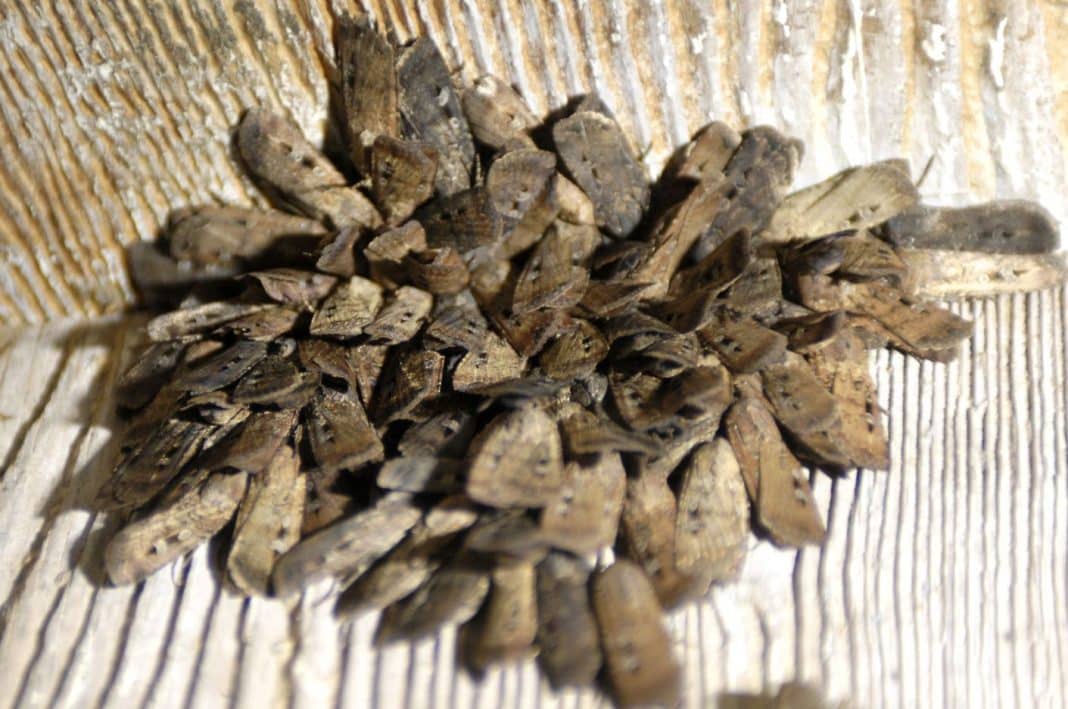The bogong moth might not be Australia’s most beloved critter, but researchers hope to make it as cherished as the cuddliest marsupial – and in the process, to bring it back from the brink.
Kate Umbers, the founder of Invertebrates Australia, has been studying the nocturnal natives for more than 10 years.
At one point, bogong moths invaded Australian cities in their billions. Now they’re so scarce their population has plummeted by 99.5 per cent.
“I want my children and grandchildren to marvel at bogong moths covering Parliament House just like I did,” she told AAP.
Dr Umbers said just five to 10 per cent of the expected number of moths have arrived at monitored sites since 2017, although the cause of the decline remains unclear.
“Christmas beetles have seen a similar story,” she said.
“People are now realising our insects are conspicuously absent.”
Each spring, the small moths migrate thousands of kilometres to reach the mountains of eastern Australia.
“It is an epic migration. Possibly the longest migration of any insect in the world,” Dr Umbers said.
About 4.5 billion once made the journey, but numbers have drastically dwindled due to severe droughts, light pollution and changing land use.
Dr Umbers, a senior lecturer in zoology at Western Sydney University, believes the decline is part of a broader phenomenon.
With a $1 million grant from the Australian Research Council, she hopes to establish a national observatory for the humble moth.
The idea involves creating a centralised database in which anyone can record their observations of bogong moths.
“We’re inviting citizen scientists from across the country to join us in this moth-tracking adventure so we can understand the causes of bogong moth decline,” she said.
The planned National Bogong Moth Observatory will include Bogong Watch, a citizen science project to reveal more about the distribution and migratory flyways of the moths.
Dr Umbers even hopes to teach people how to search for, catch and tag the furry flyers.
“You can grab them and gently stick a tag on them and then let them go,” she said.
Bogong moths are critical to the nutrient cycle and the functioning of Australia’s ecosystems.
The cascade effect of their decline has seen the starvation of other animals that rely on the moths’ migration for food, such as the endangered mountain pygmy possum.
Australians should care about moths in the same way as we care about koalas, Dr Umbers said.
“They are just as important a part of the ecosystem. In fact, invertebrates make up more than 95 per cent of known Australian animal diversity.
“So take the time to slow down and look at the little creatures around you.”
By Samantha Lock in Sydney



